What to take and wear for your first skiing trip
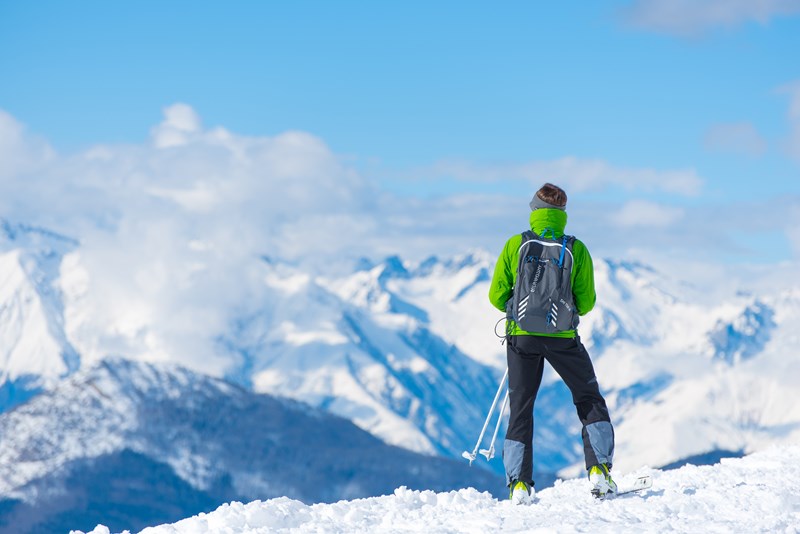
By Daniel Mackrell on 15 November 2019
Going skiing for the first time can be quite a daunting experience. There’s a lot of equipment that you need to have in place for your trip, and it might take a few tries to get the basics right.
If you’re planning out your first ski holiday, then you’ll want to make sure that you’re fully prepared for the trip. This means getting the right clothes and equipment so that you are ready for whatever is thrown at you.
One way to protect yourself and your family is to get travel insurance to cover your winter break, in case anything goes wrong. Columbus Direct gives you the option of adding Winter Sports cover to your travel insurance policy. This protects you for medical assistance while out on the snow, including the need for helicopter rescue. You are also covered if your equipment gets damaged, lost or stolen while you are on holiday, while you are also protected if the trip is affected by piste closures or avalanche delays.
When it comes to stepping on the snow for the first time, you will need to make sure that you have everything that you need to make it an enjoyable experience.
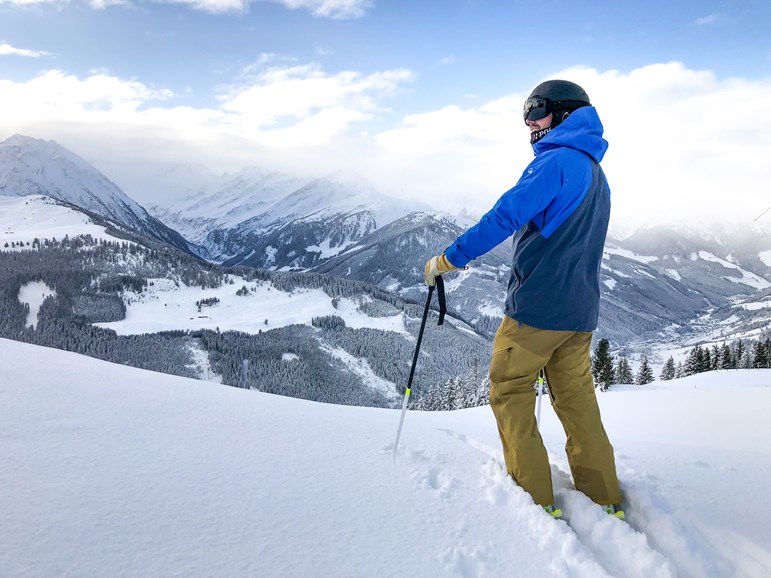
What to wear when you go skiing
It’s important to wear layers when you go skiing, as temperatures can get quite low when you’re up in the mountains, and the snow can make it feel even colder.
If you’re going to a ski resort for the first time, then it might not be worth investing in any of the more expensive equipment or clothing yet. Many resorts allow you to hire equipment to use while you’re there, such as skis, poles and helmets. You can then look at buying your own equipment once you’ve given skiing a try and have decided if you’re going to start doing it regularly.
The main clothes that you will need to pack for your ski trip includes –
These can vary in price and can cost thousands if you want to get best ones on offer. It’s important that they’re water resistant so that you don’t get too wet while out on the snow, but they should also be designed to let your sweat and body heat escape so that it stays comfortable.
Just like a ski jacket, these are there to protect you from getting wet and warm. This means that they should be waterproof but also well insulated to ensure that you are comfortable when you’re on the slopes. Some skiers also look for other features when deciding which trousers to get, such as zipped pockets to keep useful items, as well as leg gaiters to stop snow getting to your legs and feet.
This is also known as the base layer and its aim is to keep you dry and comfortable when you first step onto the snow in the freezing cold, as well as when you stop at the bottom of a slope and start sweating. There are many places to get ski-wear, with expert ski equipment shops charging higher prices for high quality clothing, but you can also find cheaper options at many high street shops.
These work in the same way as thermal tops, but they keep the bottom half of your body warm. You can get them for as cheap as £12, while higher quality can cost £50 or more, and they offer you warmth and comfort even during the coldest of temperatures.
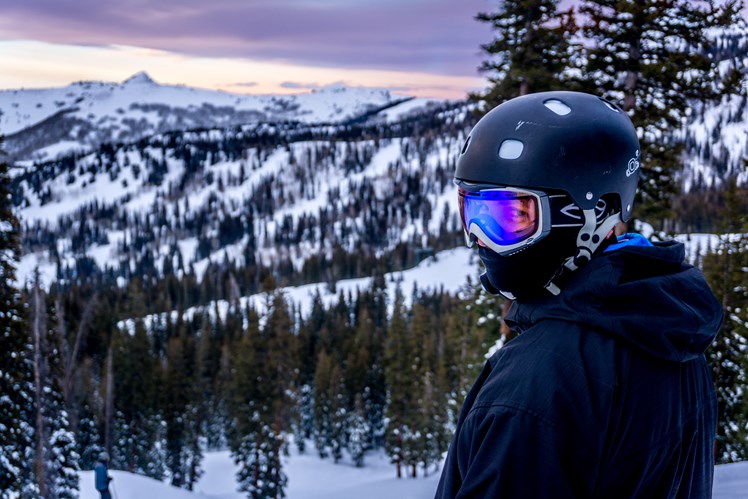
Helmet’s are often considered an essential item for skiers and snowboarders as they as they offer significant protection from head injuries. They can be an expensive purchase, with some costing hundreds or even thousands, but new skiers often have the option of renting a helmet if they are not ready to fully commit to buying one. The most important thing to remember when buying a ski helmet is to make sure that it fits your properly so that it can give you the best protection.
These are important for many reasons. They protect your eyes from snow and debris while you’re skiing or snowboarding. Another important use for them is that they protect your eyes from the sun. The high altitude means that you are closer to the sun than normal, and you often have little shade to protect you from the rays, so goggles can ensure that your eyes don’t get overwhelmed by too much sunlight.
A jumper or padded jacket can be useful to wear between your thermal clothing and your ski jacket. Its main purpose is to give you an extra layer or protection and it is particularly important during the colder months in winter.
Thermal socks are important when it comes to keeping your feet warm, especially if you are skiing in temperatures that are below zero. The best socks have good ventilation and give you enough support to stay comfy throughout your time on the snow. They are usually some of the cheaper items that you can get ahead of your trip, with pairs of socks costing as little as £4.
When it comes to choosing the right ski boots, you need to make sure that they are comfortable, but also suitable for what you’re looking to do on the snow. It should be a good fit for your feet, including the right heel support and the flexibility to support your ankles when you are taking turns and trying to keep your balance. When it comes to measuring your boots, the sizes are a bit different to regular shoes as they are based on a measurement called Mondopoint, which is the length of your foot in centimetres.
You’re not going to be spending all your time out on the snow, so you will need some jeans and jumpers to wear when you are relaxing in the evenings. Don’t forget to bring hats and scarves too, as well as swimwear if you plan to use the hot tubs and saunas that are available at many ski resorts.
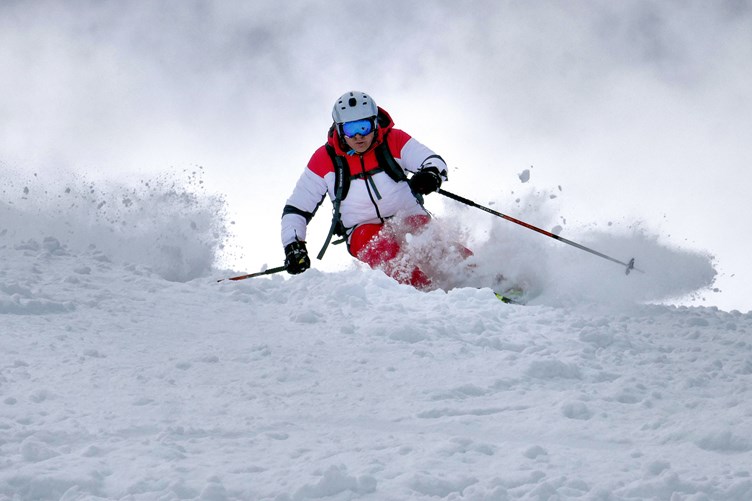
What else to take on a skiing holiday
It’s not just clothes that you need to prepare for your first ski trip, you will also need to plan what equipment you will need so that you can navigate the slopes. There’s also plenty of supplies that can be useful to have with you during the day when you are away from your hotel.
Here are some of the items that you will need to consider ahead of your first skiing trip.
You don’t need to buy skis and poles for your first ski trip, as you can usually hire them at the ski resort that you go to. The cost of hiring equipment can vary, depending on when you go, so it is worth checking ahead of time. Some resorts also off a discount if you book the equipment ahead of time.
The general guidance for choosing a ski length is to go for a pair that reaches between your chin and the top of your head. When choosing the right skis, you also have to keep in mind the width, and how suitable they are to your ability. If you’re a beginner, then you are often advised to get skis that are narrower and are designed to make it easier for you to turn and have control of your movement.
Ski poles are an important part of skiing as they are used to propel you forward, as well as help you to stay balanced while you are moving. Like skis, these can usually be hired at your resort, but you still need to know which poles will be best for you. The ideal ski pole length normally depends on your height, but there are also some skiers who prefer to use longer or shorter poles.
Despite it being cold in the mountains, the sun is stronger than normal when you are a higher altitude. This means that you’re more at risk of the sun’s rays, which makes using both sun cream and UV glasses or goggles essential.
Taking a bag onto the snow is an easy way to carry around important items like your sun cream and water bottle, as well as your ski lift pass and money that you might need during the day. You can also store your hat and scarf, as well as an emergency medical kit in case you need it while you are on the slopes.
Staying hydrated is always important, especially when you are taking part in a physical activity like skiing. A water bottle is usually the best way to carry water around with you, if you don’t mind stopping to get it out of your rucksack. There’s also the option of getting a hydration pack, which lets you drink through a long tube and means that you can have a drink without having to stop.
If you’re planning to spend most of your days in the snow instead of relaxing at the resort, then you will want to bring some snacks to keep you going through the day. High energy snacks are ideal as they can keep you going even when you are starting to run low later in the day.
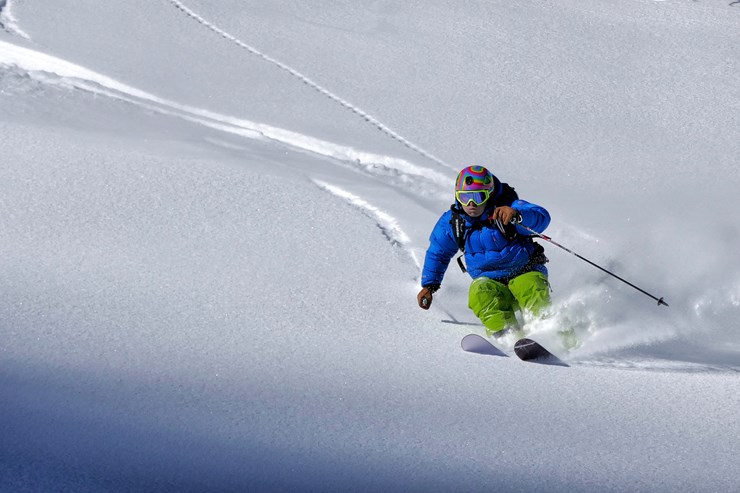
How to choose the right ski equipment
As expected, a good way to ensure that you get the right ski clothes and equipment is to do your research so that you know what you need to look for and how much you should expect to spend. There is a lot that you can buy to take with you on the slopes, and some of it can be quite expensive, so understanding your budget and your needs makes sure that you don’t overspend.
It is worth taking advantage of the hire equipment that is available at most resorts during first two or three visits before deciding whether you want to invest in some ski gear of your own. You can use that opportunity to try out some different equipment and see what works best for you. Then you can look to gradually invest in better equipment if it becomes a hobby that you regularly get involved in.
You shouldn’t feel pressure to spend loads of money ahead of your first skiing holiday, and you should instead focus on learning the basics, staying safe on the snow, and having fun!
← Columbus Direct wins ITIJ Award







